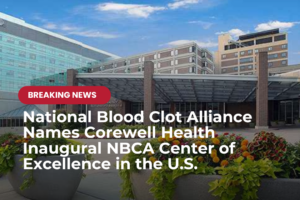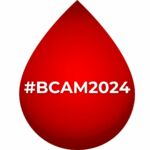DVT in the Hospital Setting
- Hospitalization is considered one of the primary risk factors for deep vein thrombosis and pulmonary embolism. Patients who are hospitalized for acute medical illness have a 10-fold increased risk for venous thromboembolism.
- Most hospitalized patients have at least one risk factor present, including immobility, cancer, infection, and/or surgery.
- Without prophylaxis, thrombosis occurs in up to 40% of medical and general surgery patients and up to 60% of patients who have major orthopedic surgery.
- Roughly one out of 10 hospital deaths are related to PE.
Key Survey Findings Among Hospitalized Patients: Awareness
- Among all hospitalized patients surveyed, 72% and 85% had not heard of a condition called DVT or PE (respectively) when these specific terms were used, even though 15% reported a personal history of a blood clot in the leg or lung, and 43% said they had a family member who previously had a blood clot in the leg or lung.
- Nearly half (46%) of all patients report that their doctor did not provide information about blood clot risks related to hospitalization.
- Another important finding is connected to health literacy. While patients have a very low awareness of DVT and PE, the survey showed that most patients (83%) do know what a “blood clot” is, and virtually all respondents (99%) recognize that blood clots can be life threatening.
Comparative Findings Among the General Public and At-Risk Hospitalized and Oncology Patients
- At-risk hospitalized and oncology patients are not significantly more aware of DVT/PE than the general public: On average, one-quarter in each group are aware of DVT when that term is used and 15% in each group are aware of PE when that term is used.
- Among cancer patients who could name DVT risk factors (n=155), just 1% mentioned “some cancer treatment,” and of the hospitalized patients who could name DVT risk factors (n=172), just 9% mention “surgery.”
- Among hospitalized (n=172) and oncology (n=155) patients able to name DVT risk factors, 63% in each group say they can name DVT signs/symptoms, significantly fewer than 79% of the 109 respondents in the general public sample who could name DVT risk factors.
- Among respondents in the general public sample (n=268) and hospitalized (n=282) and oncology patient (n=290) groups who said they know what PE stands for or what a PE is, approximately 1 in 3 from each group claim they can name PE signs/symptoms.
Key Survey Findings Among Hospitalized Patients: Information
- About half (46%) of all hospitalized patients surveyed said they were not informed about the potential risk of developing blood clots as a result of their hospitalization
- 57% said that their doctor did not discuss what can happen if a blood clot forms and half said they were not told about blood clot prevention
- When asked how they acquire medical information, the top responses were: from their doctor (83%), from the Internet (71%), from nurses (37%) and from family members (30%) and health advocacy organizations (26%).
- When asked about blood clot risk educational materials, most in the small group of patients who received them said they were given a brochure or pamphlet. When asked to rate such materials, the majority of these same respondents cited CDs, DVDs, and Web sites as “very useful.”
Key Survey Findings Among Hospitalized Patients: Prophylaxis
- Patient-reported experiences with prophylaxis varied and were suboptimal: 63% ambulation, 39% compression stockings, 37% mechanical compression, 37% aspirin, 29% anticoagulant injection, and 28% anticoagulant pill.
Key Survey Findings Among Hospitalized Patients: Adherence
- Nearly one-quarter of the 142 warfarin users in the hospitalized patient sample said that warfarin is very or moderately difficult to use. The top three barriers cited:v the need for regular blood testing (64%), bruising (50%), and dosing changes (47%).
- One third of the 145 low molecular weight heparin users in the hospitalized patient sample said that this therapy is very or moderately difficult to use. The main barriers they cited were injection related.
- Despite therapeutic barriers, 62% of hospitalized patients prescribed warfarin and 83% prescribed low molecular weight heparin said they did take the therapy for the full length of time prescribed. The very small number of patients who stopped therapy did so at the direction of their doctor.
- When asked what factors they thought might contribute to a more optimal type of treatment to prevent blood clots, four out of ten patients said: a pill instead of injections, a blood thinning medication with minimal bleeding complications, a blood thinning medication with fewer potential drug interactions.
NBCA Hospital Patient DVT/PE Awareness Study – Read More…
Risk Versus Awareness – Read More…
General Public Vs. At-Risk Oncology and Hospitalized Samples – Read More…
Hospital Findings Quick Facts – Read More…
Survey Methodology – Read More…
<<<Previous 1 | 2 | 3 | 4 | 5 Next>>>
The NBCA DVT/PE Awareness Survey was made possible by a grant from Ortho-McNeil™, a Division of Ortho-McNeil-Janssen Pharmaceuticals, Inc.




